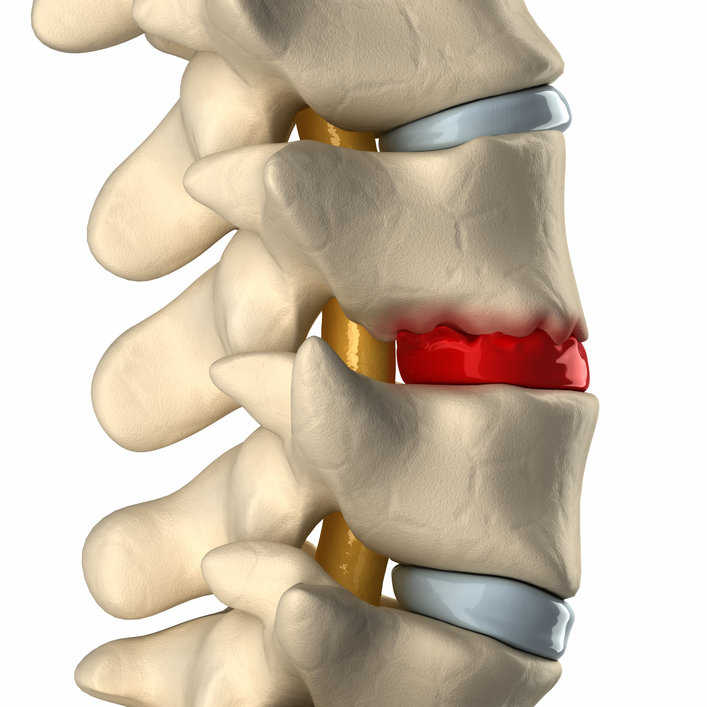Understanding Degenerative Disc Disease Symptoms & Treatment
Degenerative Disc Disease (or arthritis of the spine) is not a disease of aging. The majority of patients have been forced to believe that age is the cause of their Degenerative Disc Disease. Age does not degenerate any joints.

Back pain is no fun, but relief is available.
To prove this point, just look at other areas of the spine and you will be amazed to find young, hydrated, thick, and well-nourished joints present next to the degenerated ones in patients who are in their 70s, 80s, and even 90s.
If age causes degeneration, then all the discs of the spine should be degenerating together. Why is it that some regions of the spine deteriorate and others do not? If age is not the cause, then what is causing some discs to degenerate?
"Degenerative Disc Disease or arthritis of the spine is not a disease of aging...Age does not degenerate any joints." - Dr. Sun
The answer is elementary biomechanics.
When a joint's biomechanical function is disrupted, the motion of the joint is altered. Motion allows the flow of nutrition within the joint capsule and the cartilage.
We're Accepting New Patients!
Se Habla Español
By itself, cartilage does not have much vasculature. In fact, spinal discs lose almost all arterial circulation after age 30.
Ultimately, the motion of the spine becomes the primary form of circulation of the joint capsule, pumping nutrition in and out of the discs.
Once this motion is disrupted, the flow of nutrition changes at cellular levels. This begins the first phase of degeneration, which is disc dehydration. At this stage of degeneration, the disc can bulge out, like a balloon, and impinge on nerves or cause irritation of the surrounding tissues.

Patient Getting A Diagnostic X-Ray
The next phase occurs due to the bulging disc's extra stress upon the surrounding ligaments. The body feels the irritation and extra pressure, and it begins to calcify the surrounding tissues irritated by the collapsing disc. This is the second stage of Degenerative Disc Disease. We call these calcifications "spurs". The common medical name for these spurs is "osteophytes".
Years go by, and if the irritation is not halted, the spurs become large enough and the dehydrating disc small sufficient for the joint to totally fuse together. At this stage, the patient's mobility is compromised and the patient might feel severe and constant pain and nerve symptoms.
It is not uncommon that the majority of conservative care such as chiropractic, physical therapy, and acupuncture fail these patients. The doctor must be keen to quickly diagnose the severity of the disease and possibly refer the patient for more medical care such as cortisone injections or surgical intervention.

Disc degeneration by osteophyte formation lateral view
Relief is Available
Anyone with Degenerative Disc Disease must be evaluated by a chiropractor who understands the magnitude of joint mobility and its role in joint degeneration and osteoarthritis. Such doctors are hailed as "lifesavers" by people who have found relief through their care.
By normalizing joint mobility, the disc begins to experience the flow of nutrition. This can slow the progression of the disease or even stop it.
What To Do...
At Good Life Chiropractic, we do not just blame "age" for a disease. Age is a significant health factor, but some of our patients at Golden Age enjoy full spinal mobility with x-ray results that compare to people less than half their age.
I look forward to helping you get proper care & relief for your Degenerative Disc Disease.
We're Accepting New Patients!
Se Habla Español
Degenerative Disc Disease FAQs
Q - What is degenerative disc disease and how does it cause pain?
A - Degenerative disc disease is a condition where the discs between your vertebrae, which normally act as shock absorbers, start to wear down due to age or injury. As this happens, it can lead to pain, often due to inflammation, direct contact between vertebrae, or nerve impingement.
Q - Can chiropractic care help manage or reduce the pain associated with degenerative disc disease?
A - Yes, chiropractic care can often help manage the pain associated with degenerative disc disease. Through spinal manipulation, stretching, and other techniques, chiropractors can help alleviate pressure on the discs and reduce inflammation, decreasing pain.
Q - How often should I visit a chiropractor for degenerative disc disease?
A - The frequency of chiropractic visits can vary greatly depending on the severity of your condition and your individual response to treatment. Your chiropractor will assess your specific needs and recommend a personalized treatment plan, which could range from weekly to monthly visits.
Q - Are there specific chiropractic techniques that are most effective for degenerative disc disease?
A - There's no one-size-fits-all technique for treating degenerative disc disease as it depends on the individual's specific needs. Techniques may include spinal adjustments, flexion-distraction, and therapeutic exercises. Your chiropractor will determine the most effective approach for your specific condition.
Q - What can I do at home to help manage my degenerative disc disease pain?
A - At home, you can engage in regular low-impact exercises, such as walking or swimming, to help maintain flexibility and strength. Additionally, maintaining good posture, staying hydrated, and using heat or cold therapy can help manage pain. It's important to discuss any new exercise routine or pain management strategy with your healthcare provider to ensure it's safe for you.
#degenerativediscdisease #arthritis #spine
